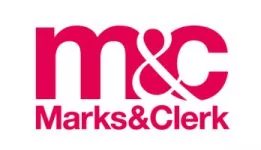- within Intellectual Property topic(s)
- within Immigration topic(s)
The field of neurotechnology is rapidly evolving, bringing together advances in neuroscience, engineering, materials science, and computing. These innovations hold the potential to transform how we diagnose and treat neurological conditions – yet, protecting such innovations through the European patent system brings challenges.
For those coming from engineering, rather than pharma and biotech backgrounds, understanding the legal nuances specific to the healthcare space is key to protecting and commercialising neurotech inventions effectively.
Article 53(c): The barrier to method claims
To begin, let's consider a cornerstone of European patent law: Article 53(c) of the European Patent Convention (EPC). This Article excludes from patent protection any methods for treatment of the human or animal body by surgery or therapy, and diagnostic methods practised on the body.
At first glance, this seems pretty draconian – especially when compared to the US, where such methods can be patented readily. However, there's an important reason for the European exclusion: it seeks to ensure that medical professionals can freely choose the most suitable treatment, without fear of infringing a patent. This also means that while devices can be patented, the methods of using those devices in a medical setting cannot be an infringing act.
Accordingly, it's equally important to understand what is not excluded. Under European patent law, you can protect:
- Medical apparatus or systems, including those involving software
- Software resulting in a technical effect
- Features of devices used in treatment or surgery (as long as they enable it to perform surgery or have a technical effect that is not related to treatment)
For example, a device suitable for implantation could be patentable. A novel and inventive biocompatible material for the device would also be patentable, along with devices coated in that material and the method of applying the coating. However, if a new surgical technique were needed to insert the device, the technique itself would not be patentable under European law.
The robotic roadblock: Why the operator doesn't matter
Importantly, the exclusion applies regardless of who carries out the method. Article 53(c) cannot be circumvented by having a robot or computer implement the surgical or therapeutic step. If the method is carried out on the body, it still falls under the prohibition, regardless of whether it is a human or machine doing it.
An example of this dynamic is in a recent claim filing from Neuralink, an American neurotechnology company founded by Elon Musk and known for developing implantable brain-computer interfaces.
In September 2024, Neuralink was granted a European patent for a method of configuring a robot to perform surgery. Initially, the European Examiner objected to the claim language, which included "a method for robotic surgical implantation of an electrode," on the basis that it was excluded as a surgical method. Neuralink responded by arguing that the method related only to preparing the insertion needle, not performing the implantation itself. However, ultimately it was necessary to reframe the claims to focus on configuring the robot before the surgery, rather than the robot's actions during the surgery, to overcome the Article 53(c) objection.
There is more flexibility when it comes to methods of operating a medical device – but only as long as the method does not produce effects on the body. An illustrative example from European case law involved a drug delivery implant that measured flow volumes. The technical contribution was not in the treatment itself, but in the miniaturised system used to detect small liquid volumes. Because the method focused on monitoring the functionality of the device rather than the administration of the drug upon the body, it was not excluded under Article 53(c).
This highlights a practical strategy for those looking to protect innovations: a well-drafted claim set may still allow applicants to protect methods of using their devices, provided that use is not performed directly on the body. Still, the most reliable path remains protecting the device itself.
Function & form: Why multi-use doesn't mean multi patent
Varied use also doesn't confer new patentable value. The same neural electrode used in treating Parkinson's disease, epilepsy, or depression – potentially using similar control parameters – could not be patented separately for each use.
This stands in contrast to pharmaceuticals, which benefit from a unique provision under Article 54(4) and (5) EPC. Known substances or compositions can be patented for a new therapeutic use. This provision, however, does not apply to medical devices as these are not expended or consumed through use, and therefore do not gain novelty simply from a new application.
As a result, a device cannot be patented on the basis of treating one condition, if it is structurally identical to one treating another condition. Instead, to qualify for patent protection, it must include a structural feature that makes it suitable for the new use. Returning to our neural electrode example: developing a longer iteration designed to reach deep brain regions, or one rigid enough to be implanted through brain tissue without buckling or fracturing, indicates modification of a known device for new therapeutic methods.
Balancing innovation and compliance
Securing effective patent protection for neurotech innovations in Europe demands a nuanced understanding of the EPC's exclusion of medical methods under Article 53(c). By recognising and adhering to its limits, applicants can develop well-crafted patent strategies that protect their inventions while upholding the principle of ensuring unrestricted treatment options for healthcare professionals. As neurotechnology evolves, clear and compliant patent drafting will be essential to achieve commercial success in the European market.
Originally published by Pharmaphorum
The content of this article is intended to provide a general guide to the subject matter. Specialist advice should be sought about your specific circumstances.



